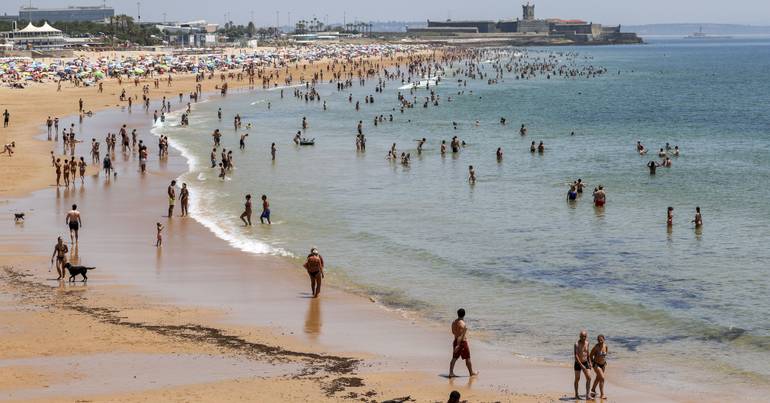

In an ever-changing world, communities across the globe continue to face unique environmental challenges, necessitating thoughtful and effective responses. This narrative weaves together the stories of Cascais in Portugal confronting invasive algae, alongside the heat-related challenges faced by communities in Greece and the eastern United States, offering insights into human resilience and innovation.
Cascais, a seaside town renowned for its stunning beaches, has embarked on a crucial campaign against an invasive algae species that threatens its coastal charm. Local authorities have proactively formulated a comprehensive action plan to address this ecological concern, motivated by the understanding that, without intervention, the town’s beaches could face significant degradation. The focus is on enhancing the understanding of the algae’s behavior and refining strategies to manage its impact effectively. This mindful approach reflects the community’s commitment to preserving its natural resources while emphasizing adaptability and sustainability.
Moving across the globe, the eastern United States is experiencing a pronounced heatwave that has ushered in a heightened state of alert. As temperatures soar, New York City, among other regions, braces itself for intense heat that could feel as hot as 41 degrees Celsius when humidity is factored in. This atmospheric phenomenon, often referred to as a “heat dome,” underscores the importance of community preparedness and the implementation of public safety measures. These conditions serve as a reminder of the climatic variations that communities worldwide must navigate, urging a shift towards strategies that enhance people’s resilience and promote well-being during extreme weather events.
In another part of the world, Greece stands amidst its own climatic trials, as thermometers in various regions, including the bustling city of Athens, record temperatures as high as 46 degrees Celsius. This situation has prompted Greek authorities to extend the closure of the iconic Acropolis to tourists during peak heat hours, from noon until 5 PM. Such decisions highlight the balance between protecting public health and maintaining cultural heritage, reflecting a broader commitment to managing environmental impacts while respecting historical and cultural contexts.
These stories, although distinct in nature, intersect within the broader narrative of environmental stewardship and community resilience. They emphasize the necessity for proactive strategies, scientific insights, and adaptive measures. Each region’s experience offers a lesson in how communities can mobilize resources and wisdom to address challenges imposed by natural phenomena, reinforcing a collective understanding of our global interconnectedness. As we navigate these varied landscapes, it’s clear that designating priorities such as environmental education, sustainable practices, and community-focused planning will be essential components of future resilience efforts.
In conclusion, whether tackling invasive algae along Portugal’s coast, implementing safety measures against sweltering heat in America, or safeguarding historical landmarks in Greece, the underlying theme is one of unity in action and hope. The determined steps being taken by these communities offer a serene yet powerful reminder of human capacity to adapt and overcome, subtly urging the world to embrace its shared responsibility towards nurturing and preserving the earth for generations to come.
Source: {link}
